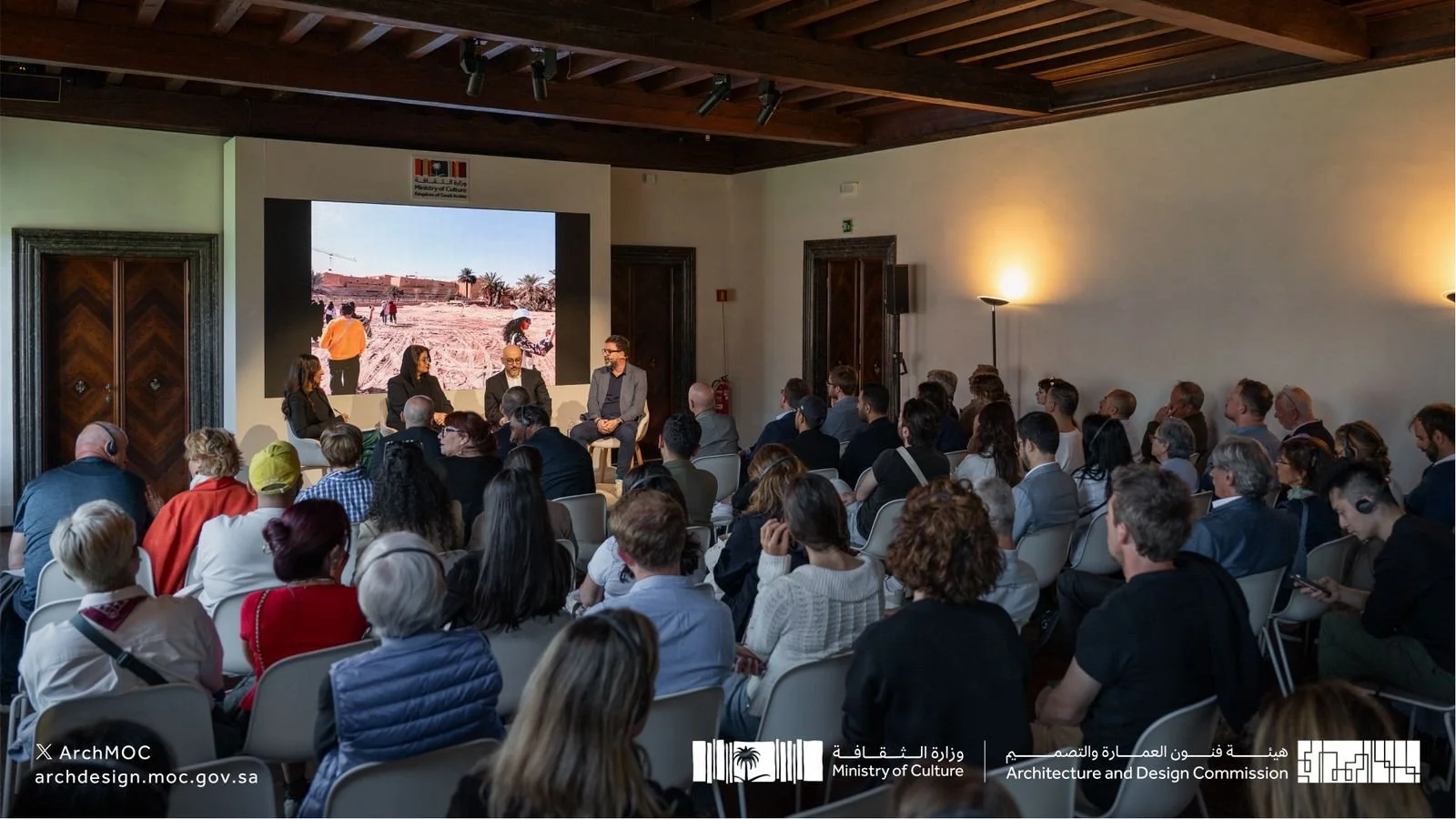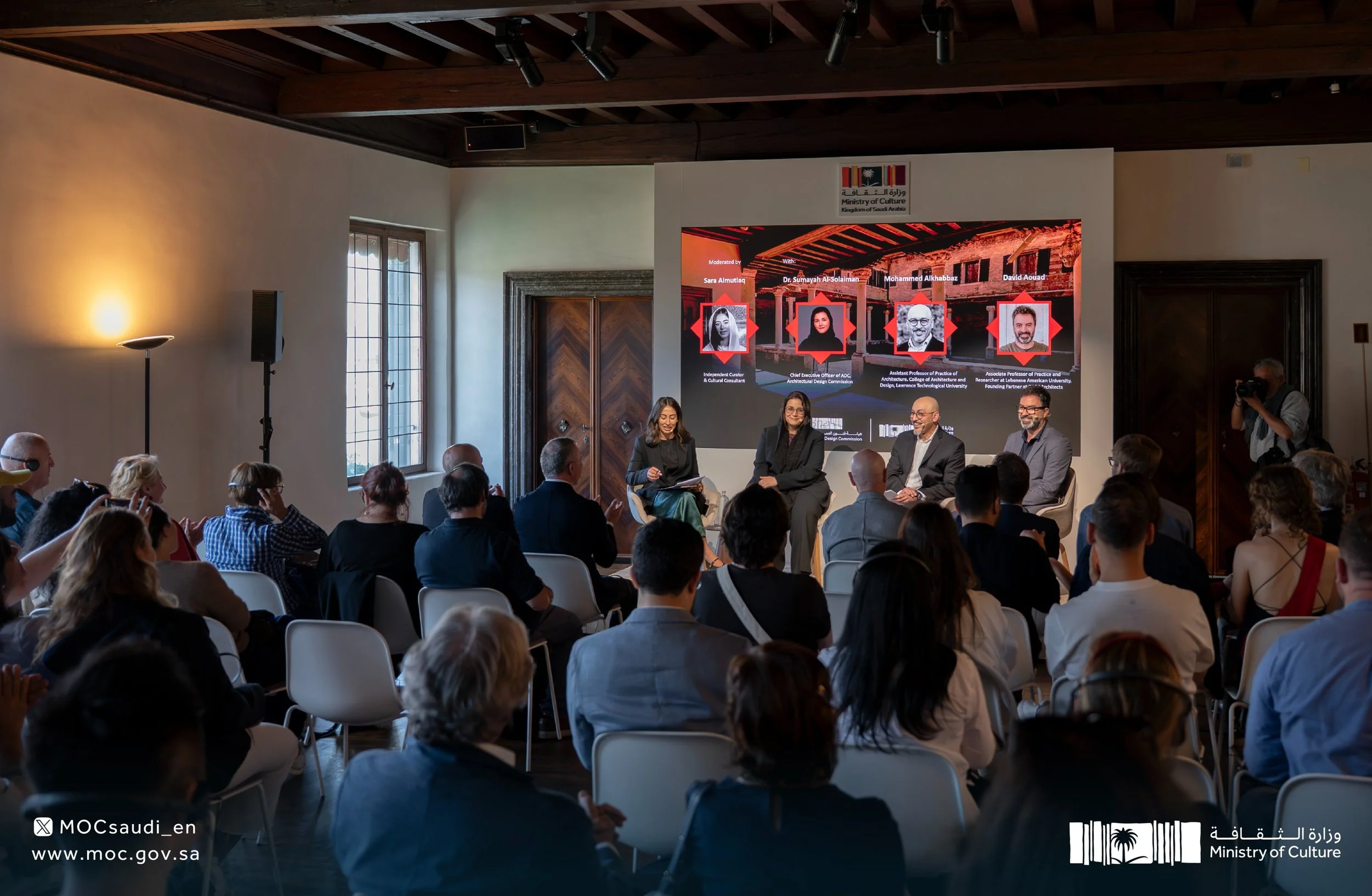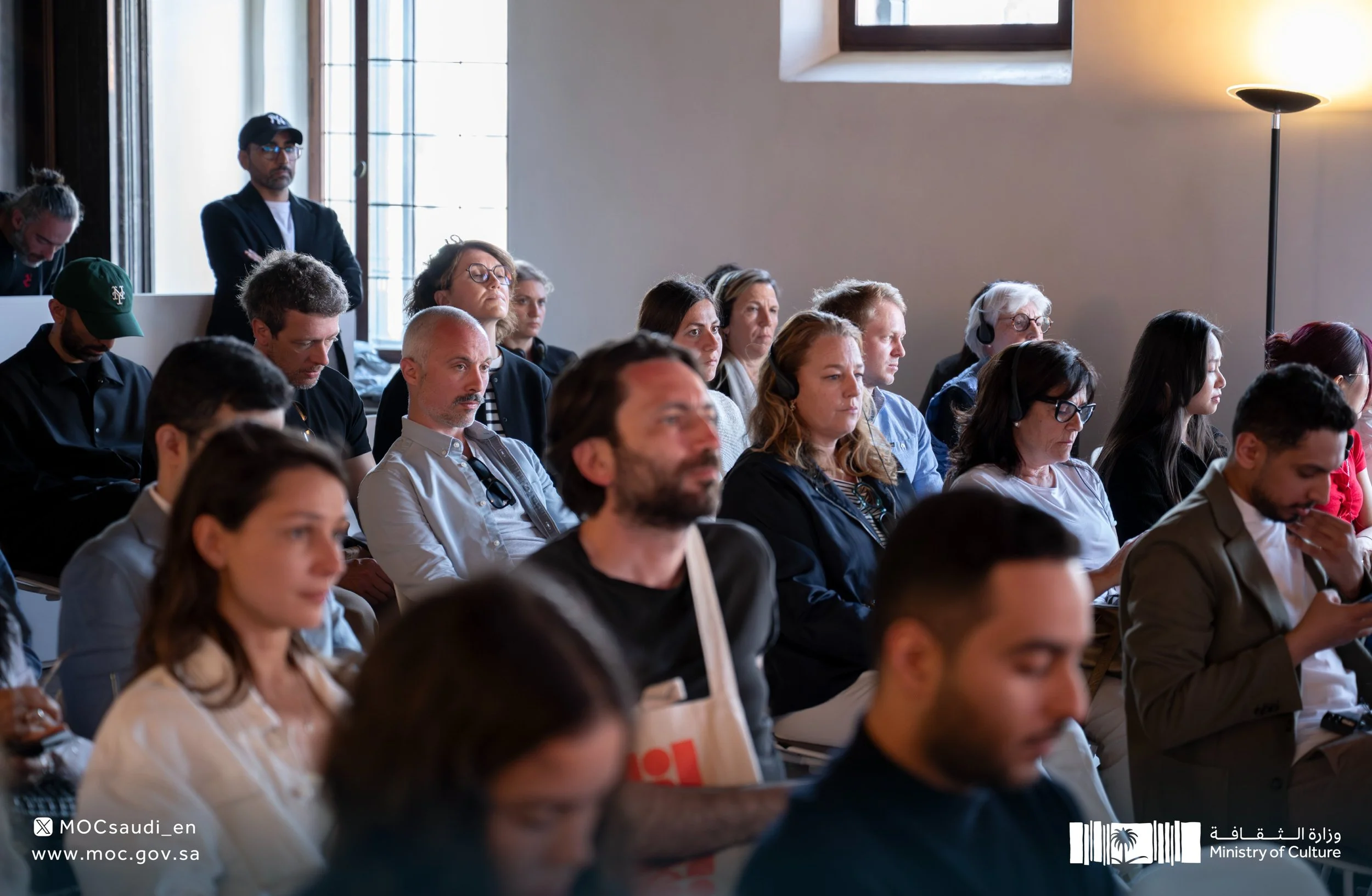Aouad Delivers Talk at Venice Biennale 2025
At the Abazzia building in Venice. The panel Architecture & The City: Reflections on the Key Trends in the Saudi Architectural Scene offered compelling insights into how architecture serves as a vessel for cultural identity in Saudi Arabia. A vibrant dialogue unfolded.
On Saturday, May 10, the historic Abbazia San Gregorio in Venice hosted the panel discussion “Architecture & The City: Reflections on the Key Trends in the Saudi Architectural Scene” as part of the Venice Biennale. This timely event gathered leading voices in architecture to explore the evolving landscape of urban development in Saudi Arabia—from its early oil-era master plans to its current wave of culturally anchored projects.
Moderated by Sara Almutlaq, the panel featured Dr. Sumayah Al-Solaiman, CEO of the Architecture and Design Commission; Mohammed Alkhabbaz, Assistant Professor at Lawrence Technological University; and David Aouad, Associate Professor of Practice at the Lebanese American University and Founding Partner at DAJH Architects. Together, they offered multi-layered perspectives from within academia, institutional leadership, and professional practice.
The discussion traced the trajectory of Saudi architecture beginning with the transformative oil boom of the 1950s, which spurred the creation of landmark urban plans such as the Diplomatic Quarter, Qasr Al-Hukm, and the King Abdulaziz Historic District. These early projects laid the groundwork for a modern architectural identity that continues to evolve today.
The panel examined how today’s architectural practices in Saudi Arabia are deeply informed by cultural heritage and national narratives, and how they actively engage with questions of place, memory, and redevelopment. This included a nuanced look into how archives, preservation strategies, and contemporary urban initiatives intersect to shape new models of spatial and cultural expression.
Speakers emphasized that Saudi Arabia’s current architectural moment is not only a reflection of internal transformation but also a projection of the Kingdom’s global cultural ambitions. From design commissions to academic inquiry, architecture is being used as a powerful tool to reimagine urban futures and stimulate inclusive development.
The event was made possible by the Saudi Ministry of Culture and the Architecture and Design Commission, whose support underscores a growing commitment to fostering dialogue around architecture as both a practice and a cultural force. As the panel concluded, it was evident that Saudi Arabia’s architectural journey is one of both reflection and innovation—rooted in its heritage while confidently oriented toward the future.






